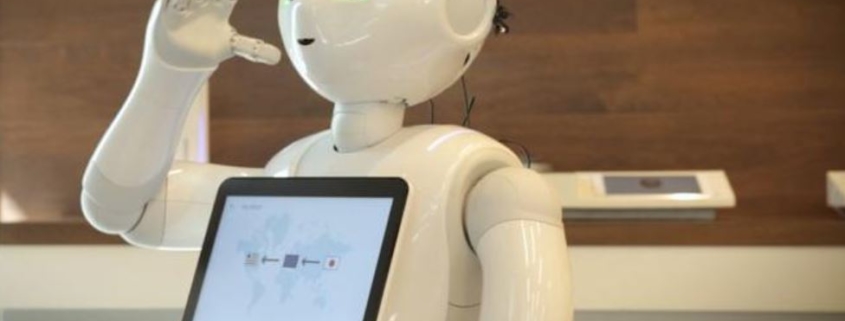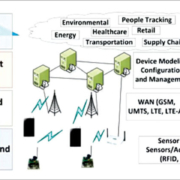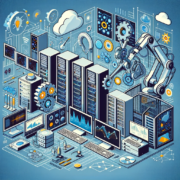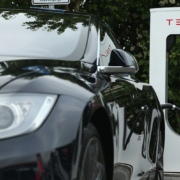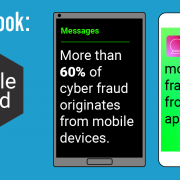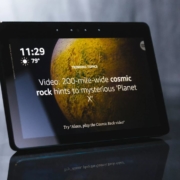IoT in the office: Everything you need to know about the Internet of Things in the workplace
Bringing the Internet of Things into your workplace can bring new opportunities — and some risks too.
By Steve Ranger | March 28, 2018 — 10:00 GMT (03:00 PDT) | Topic: Internet of Things
What is IoT in the workplace?
The Internet of Things sees everyday objects being connected to the internet, allowing them either to be controlled remotely, or to collect and share data and communicate without a human being involved. IoT in the workplace can involve a variety of hardware and technologies such as smart devices, robots, and artificial intelligence to improve efficiency and create new business opportunities.
- Optimising the smart office: A marriage of technology and people
- Can a smart office make your team more productive too?
What are the advantages of IoT in the workplace?
Making devices and objects in the workplace more intelligent and able to communicate could make workers happier and more effective, and also make it easier to measure productivity by using real-time data. In addition, it could make staff more efficient by using the artificial intelligence embedded in these devices to automate basic queries and tasks.
- Most US workers want to see more AI and robots in the office
- 3 ways the ‘smart office’ will change the future of work
What kinds of IoT devices are there in the workplace?
SPECIAL FEATURE
Cybersecurity in an IoT and Mobile World
The technology world has spent so much of the past two decades focused on innovation that security has often been an afterthought. Learn how and why it is finally changing.
IoT in the workplace can be divided into three main categories: infrastructure, repurposed smart home devices, and business-specific IoT devices.
Although there has been much talk about smart buildings recently, the infrastructure of the workplace has been quietly getting smarter for years; for example, building management systems have existed for some time, and are used to control heating, air conditioning, or doors. In addition, office security and alarm systems are now regularly connected to the internet to allow them to be controlled through apps.
Making these systems more intelligent — like a heating system that knows how the office temperature responds to changing weather — allows the office to run more smoothly and so means happier staff. Similarly, vending machines that can call home to ask to be refilled means fewer staff missing their much-craved afternoon sweet treat.ADVERTISING
Much of the early interest in IoT devices has been in the home, whether that’s Amazon’s Alexa, Google’s Home smart speakers, or other gadgets such as smart plugs, lightbulbs, locks, coffee machines, motion sensors, air quality sensors, and cameras. These same devices can also be found repurposed in the workplace — whether that’s in a home offices or in a more corporate setting. Sometimes, office management is aware of these devices, sometimes they are simply brought in by staff from home. Some of these devices may be useful to individuals in doing their jobs or are simply a novelty.

Finally, there are devices designed specifically for business use, like large-screen displays and videoconferencing setups. Increasingly, vendors are attempting to add a level of intelligence to these devices to make them more useful and easy to control. There are also new technologies in the workplace: smart desks that can warn you if you’ve been sitting — or standing — too long and gather data to encourage you to improve your habits, for example. Big tech companies are also turning their attention to ways of bringing all these disparate devices together to be managed more effectively.
- Philips Hue outdoor connected lighting hits US, Europe this July
- 11 products to make your conference rooms smarter and easier to use
- 10 ways smart offices are saving energy and lowering their carbon footprint
IoT in the office: Voice takes the lead

Simplify IT Tasks with a Smarter Service Desk
Samanage Service Platform is an award-winning, fully integrated IT service management and IT asset management solution. See how you can automate daily IT tasks, achieve faster ticket resolutions, and deliver exceptional services while driving better…Downloads provided by SolarWinds
Just as in the home, few IoT devices in the office environment will have a keyboard, which means voice control will be the standard.
As has been the case in the home, expect to see office hardware providers start to offer voice integration with their devices in the near future. To be most effective, these devices need to be coordinated through a single virtual digital assistant. These digital assistants increasingly incorporate machine learning and elements of artificial intelligence to enable them to respond more effectively to questions.
While Microsoft might be expected be able to use its control over the PC to give itself a headstart with making Cortana the digital assistant of choice, right now Amazon seems to be leading the pack — as it is in the home — with its Alexa for Business programme.
However, a number of tech companies are looking at the potential combination of artificial intelligence and the IoT in the office. IBM’s Watson Assistant can be used to create applications that understand natural language and respond to customers in human-like conversation. These applications can either live on the web or be embedded into devices like robots. As CNET reports, a Watson Assistant is already in use at Munich Airport to power a robot that can tell you directions and gate information.
- Five ways voice assistants are going to change the office
- Alexa for Business likely to win in smart office, leverage AWS, Echo, developers and consumers
IoT in the office: Alexa for Business
Late last year, Amazon unveiled Alexa for Business which allows companies to use its Alexa digital assistant in an office setting. It’s currently the most well-defined office digital assistant offering: for example, organisations can use the Amazon Echo smart speakers in the office to provide information, like the location of the nearest free meeting room, or to allow staff to order supplies.
Staff could use an Echo on their desk for more personal tasks such as making phone calls or sending messages, checking calendars and to-do lists, or for accessing information from business applications like Salesforce, Concur, or Splunk.
Organisations can provision and manage shared devices around the workplace using the Alexa for Business console. For each device firms can set a location — like the conference room — and assign public and private Alexa skills.
Download now: Enterprise IoT calculator: TCO and ROI
Companies can build their own private Alexa skills which might be used to access things like sales data or inventory levels, or to control conference-room equipment settings.
“Alexa for Business automatically knows what the meeting is from the integrated calendar, mines the dial-in information, dials into the conference provider, and starts the meeting. Furthermore, you can also configure Alexa for Business to automatically lower the projector screen, dim the lights, and more,” Amazon CTO Werner Vogels said recently. Vogels added that business customers have already built hundreds of private Alexa skills: “Everything from getting internal news briefings to asking what time their help desk closes.”
Robots in the office?
There have been robots in the workplace for many years now, although they are more usually found in manufacturing and engineering, or in warehouses (as part of the industrial Internet of Things).
In the office, there is much less requirement for the heavy physical work that industrial robots carry out. However, there have been a number of trials of humanoid robots in the workplace. For example, Softbank’s Pepper robot can be found greeting guests at hotels and at conferences, and has been used as a robot receptionist in one London office. While many of these use cases are novelties, they suggest that even in the office, some repetitive roles could be replaced by automated systems.

A second use case for robots in the office is for telepresence. Rather than a standard video conference situation where you chat to someone on a screen attached to wall of a meeting room, a telepresence robot — at its most basic, a screen and webcam on wheels — allows a visitor not just to see the office and talk to people, but to roam around it at will. Such devices are not cheap; hiring a robot-as-a-service can cost $1,000 to 2,000 a month but supporters argue that it offers a significant quality improvement over standard videoconferencing and is still much cheaper and more efficient than having visitors physically travel to the office. One estimate suggests the market for telepresence robots could be worth $8bn within five years.
- Robotics in business: Everything humans need to know
- Your next real estate agent could be a robot
- What a Danish robotics company’s success tells us about the global market for automation
- iRobot spinoff Ava Robotics comes out of stealth mode
Workplace IoT security concerns
The different types of devices being used in the office create different potential security risks.
If employees are considering bringing consumer IoT devices into the office, they should be aware that few of these gadgets have even basic security controls. These devices often incorporate microphones, cameras, and ways of recording their location and, as they are too often easy to hack into, they can provide a ready-made tool for industrial espionage sitting in the corner of your meeting room. Even if they are not being used to deliberately spy on your organisation, these devices can record vast amounts of data about your office and staff which could easily become a privacy headache. It is very easy for staff to connect these devices to the office W-Fi network but very hard for manager or IT staff to spot and manage them.
But it’s not just consumer devices that could cause you IoT security problems — buildings management systems are regularly found to be badly configured and easily accessible from the internet, which could leave vital systems open to surveillance or meddling by third parties. Imagine the chaos if a retailer was unable to open the shutters at any of its stores — or if the doors at your office refused to budge.
Introducing smart assistants and smart speakers also means that much of what is said in meetings is likely to be recorded, analysed, and stored by big tech companies. For most users this is unlikely to be a risk, but would the CEO and CFO really feel comfortable about a smart speaker listening in the corner of the room while they discuss a big deal, or lay-offs?
How will the IoT change the office?
The introduction of the IoT into the office should make processes more efficient. Coffee machines will never run dry and it will be easier to book or find a meeting room — and, when you get there, the videoconferencing setup will respond to your voice. Offices might be noisier too, if voice-controlled devices become more commonly used, which may be something of a problem for open plan offices. And, if robots for videoconferencing and other roles become popular, we may have to get used to having colleagues made of metal wandering around the office too
Managing IoT devices in the office
Just as with any other device, organisations need to have a policy around the use of IoT devices in the workplace. There should be rules around what staff can bring in themselves and where these devices can be used and whether they can be connected to the office network.
For business IoT devices that are able to record video or sound it may be necessary to involve HR to ensure that privacy is being protected.
IT needs to have a role in making sure that devices connected to corporate networks can be secured — and are regularly patched and updated — and cannot give hackers a potential foothold from which to launch their attacks. Where possible, data should be encrypted in transit and when stored to reduce the risk of compromise.
IoT in the workplace: Future developments
The use of sensors around the home and in the office is only likely to increase in future. This will make it easier to measure nearly everything that goes on physically in the office. This will make the office infrastructure more efficient but may introduce new challenges: staff may not like being monitored by their smart desks or an IoT employee badge or other systems; managers will need to take care about how the data generated by these systems is used.
Looking further out, integrating wearable devices with the smart office is one potential area of development: it’s not much of a stretch to imagine a smartwatch being able to open the door to your office and log you into our desktop. But these devices also carry lots of other sensors which could be useful; perhaps HR could get an alert if everyone’s heart rate began to peak while dealing with a particularly stressful manager.

